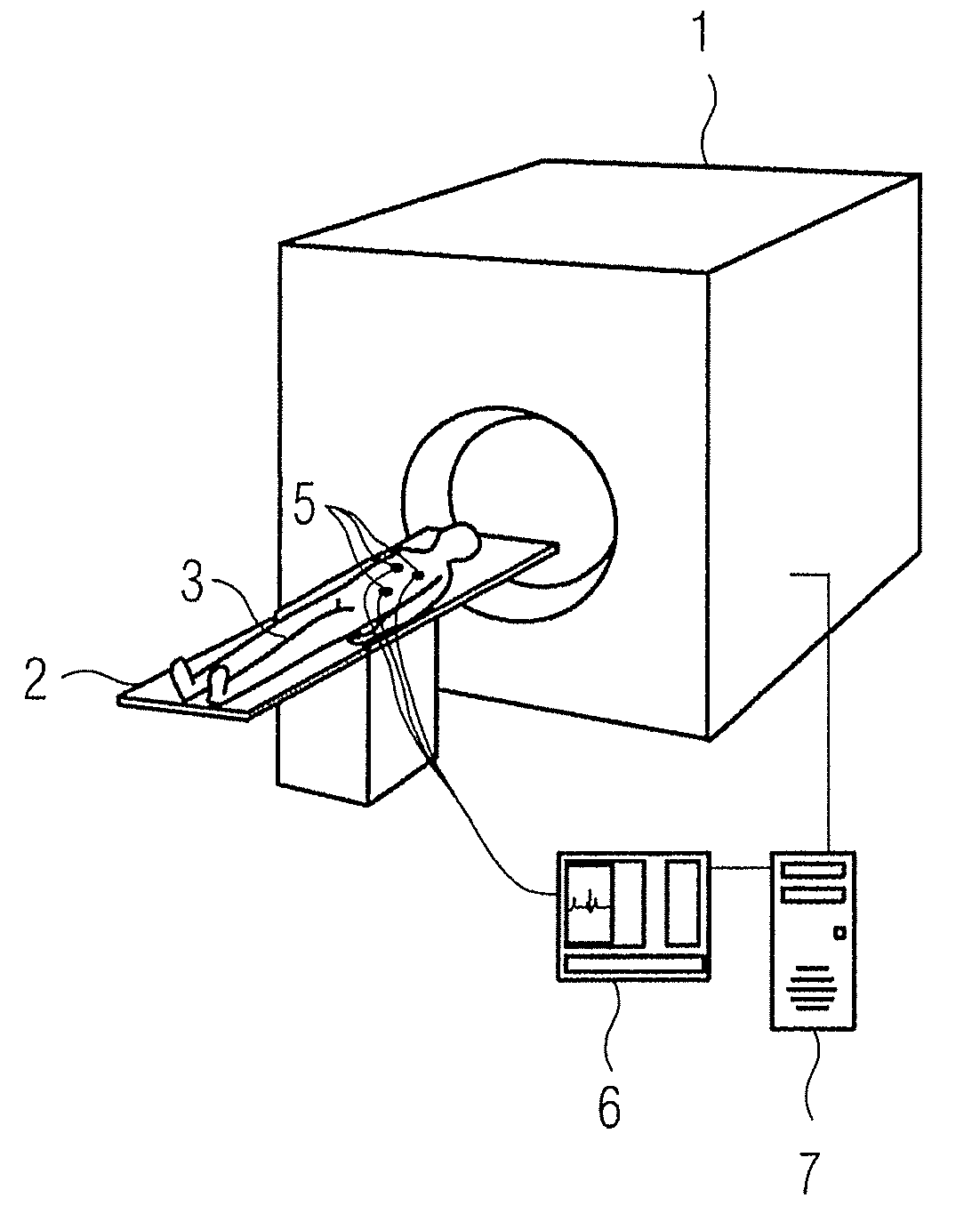Method and magnetic resonance tomography apparatus for triggered acquisition of magnetic resonance data
a technology of magnetic resonance data and tomography equipment, which is applied in the field of method and magnetic resonance tomography equipment for triggered acquisition of magnetic resonance data, can solve the problems of shortening the wait time and achieve the effect of reliable and disruption-free data acquisition
- Summary
- Abstract
- Description
- Claims
- Application Information
AI Technical Summary
Benefits of technology
Problems solved by technology
Method used
Image
Examples
Embodiment Construction
[0046]FIG. 1 shows a magnetic resonance system 1 having a bore in which a patient bed 2 can be inserted. To acquire magnetic resonance data from a patient 3, the patient 3 is supported on the patient bed 2 and electrodes 5 are located on the body of the patient 3 to detect an EKG signal 4. The signals detected by the electrodes 5 are relayed to the EKG device 6. The EKG device 6 communicates with the control device 7 of the magnetic resonance system 1, wherein the EKG device 6 and the control device 6 can naturally be spatially separated devices or can also be arranged in a single housing.
[0047]FIG. 2 shows a known method from the prior art for EKG-triggered implementation of a measurement. The R-spike 8 of the EKG signal 4 is used as a reference point of the cardiac phase. The time between the occurrence of two R-spikes 8 is designated as an RR-interval 9. The control device 7 of the magnetic resonance system 1 polls the trigger signal in the EKG device 6. If this occurs, a partial...
PUM
 Login to View More
Login to View More Abstract
Description
Claims
Application Information
 Login to View More
Login to View More - R&D
- Intellectual Property
- Life Sciences
- Materials
- Tech Scout
- Unparalleled Data Quality
- Higher Quality Content
- 60% Fewer Hallucinations
Browse by: Latest US Patents, China's latest patents, Technical Efficacy Thesaurus, Application Domain, Technology Topic, Popular Technical Reports.
© 2025 PatSnap. All rights reserved.Legal|Privacy policy|Modern Slavery Act Transparency Statement|Sitemap|About US| Contact US: help@patsnap.com



